supernova
Latest

Scientists observe a red supergiant going supernova for the first time
Astronomers have captured a red supergiant supernova explosion for the first time, gathering crucial new information about these dramatic events.

A star fragment is flying out of our galaxy at nearly two million miles per hour
Scientists have studied a supernova star fragment flying out of the Milky Way galaxy at nearly two million miles per hour.
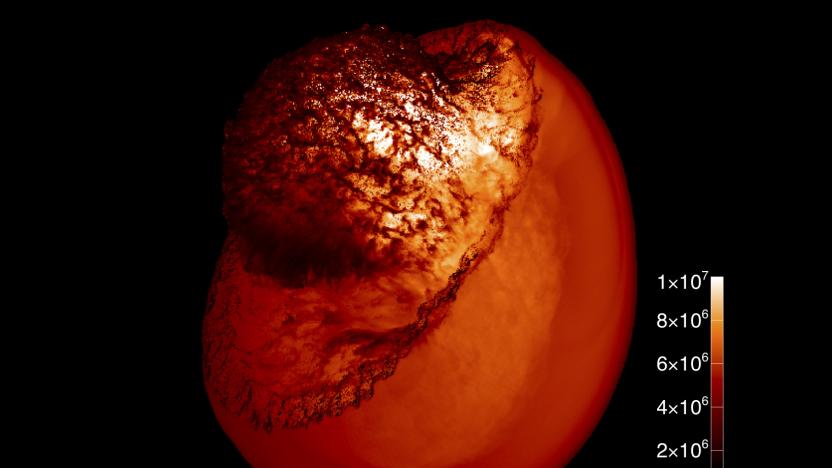
Modeling the bizarre remnants of a supernova
Astronomers from the INAF-Palermo Astronomical Observatory modeled a supernova remnant called IC 443 or the Jellyfish Nebula, showing just how weird they can get.

Supernovae may generate life-giving carbon atoms faster than thought
Using supercomputer simulations, Michigan State University scientists have found that exploding stars create life-giving carbon atoms much faster than they thought. However, that discovery has created another mystery that could upend current theories of element creation and help fuel new science in the areas of astronomy and fusion.
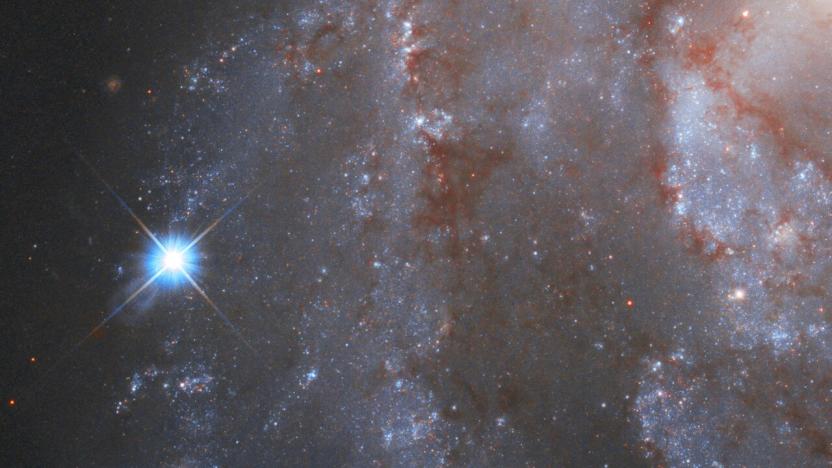
The Hubble Telescope caught a supernova outshining every star in its galaxy
The Hubble Space Telescope got a rare look at one of the most awesome light shows in the universe, catching a supernova that outshone every star in its galaxy.
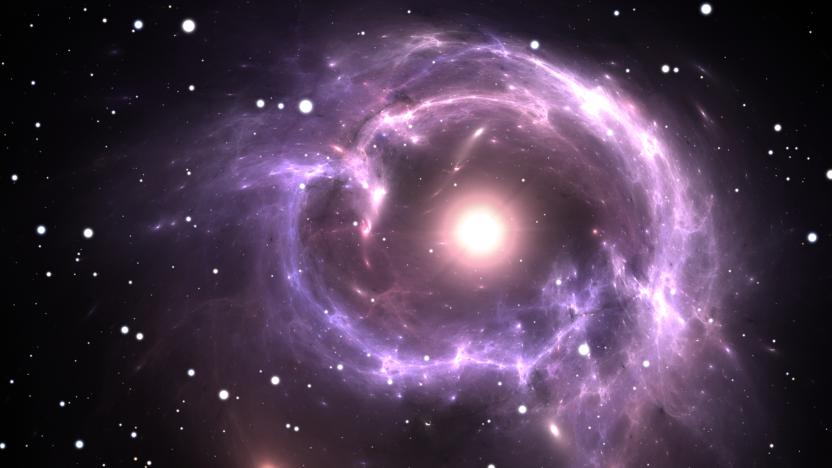
Astronomers are puzzled by a mysterious dead star
Physicists aren't sure if they've found the heaviest neutron star or the lightest black hole.

Astronomers observe the brightest supernova on record
In 2016, astronomers spotted the brightest supernova ever observed. They watched as the supernova, named SN2016aps, continued to emit radiation for more than 1,000 days.
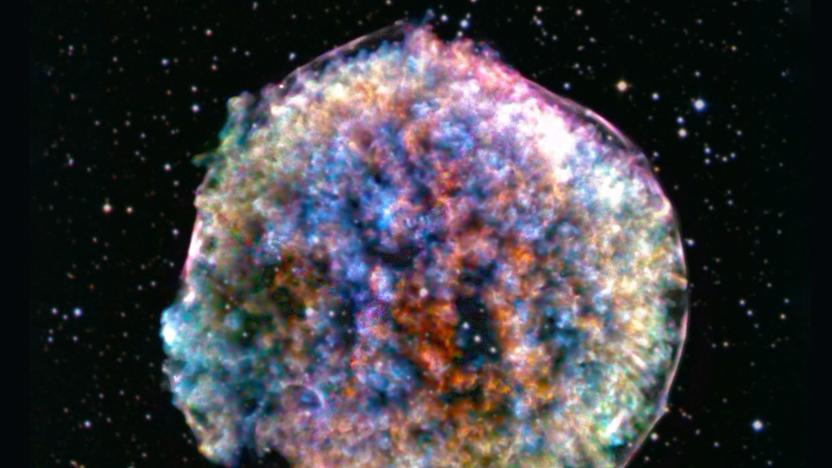
A star died violently and left behind this 'fluffy' ball
Stars die all the time, but the untimely passing of SN 1572, also known as Tycho's Supernova, is possibly the most famous. That's because it's relatively close to us in the Milky Way's Cassiopeia constellation, so when it exploded in the year 1572, it became the second-brightest object in the night sky for a time. It caught the eye of many astronomers of the day, but was named for Danish astronomer Tycho Brahe, who made the most accurate observations.
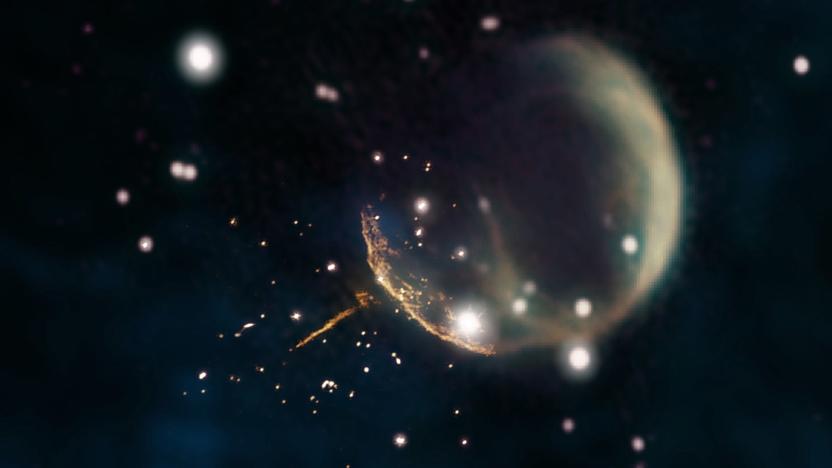
'Cannonball' pulsar points to the supernova that formed it
Astronomers have clocked a spinning star at 2.5 million MPH and grabbed an image that leaves no doubt where it came from. Using NASA's Fermi Telescope and the Karl G. Jansky Very Large Array (VLA), a team of scientists imaged pulsar J0002, originally discovered by citizen science project Einstein@Home. What makes it look so cool is the clear evidence it came from a recent supernova. "Thanks to its narrow dart-like tail and a fortuitous viewing angle, we can trace this pulsar straight back to its birthplace," said NRAO scientist Frank Schinzel.

Air Hogs' Supernova packs motion controls in a kid-friendly drone
Toy drones have been cheap and plentiful over the past few years, but it's really hard for new products to stand out from the pack when they need to keep the price down and can't throw in premium features like a 4K camera. But that hasn't stopped Spin Master from trying new things with its Air Hogs line: At this week's Toy Fair, the company is debuting its first motion-controlled model, the Supernova. It's not quite DJI's Mavic Air, but it's still got some sweet moves to show off in a more kid-friendly form factor.
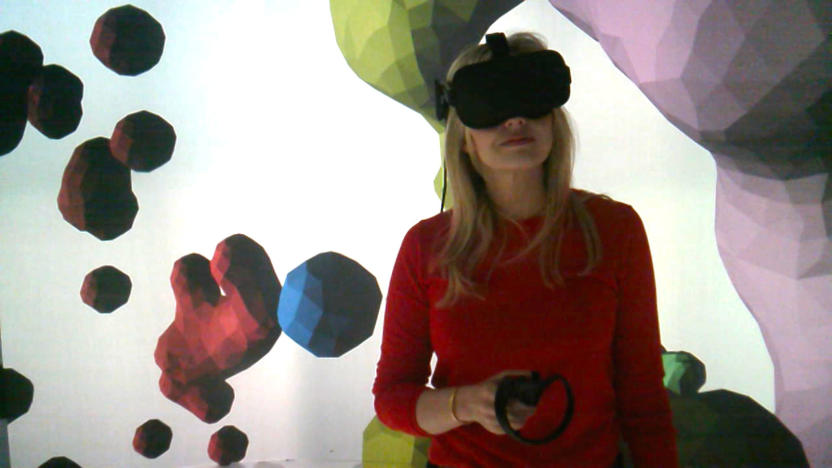
Scientists made a virtual supernova you can walk around
At 11,000 light-years away, it's safe to say you won't be able to visit Cassiopeia A even if private space corporations start selling seats to amateur spacefarers. Thanks to a team of scientists, though, you might be able to see the 300-year-old supernova remnant up close -- or even walk inside it. The team used data from NASA's Chandra X-ray Observatory, the Spitzer Space Telescope and ground-based facilities to create a 3D model of Cassiopeia A with VR and AR elements. You'll be able to walk into the model, engage with parts of the remnant and conjure up short captions on what you're seeing and "touching."
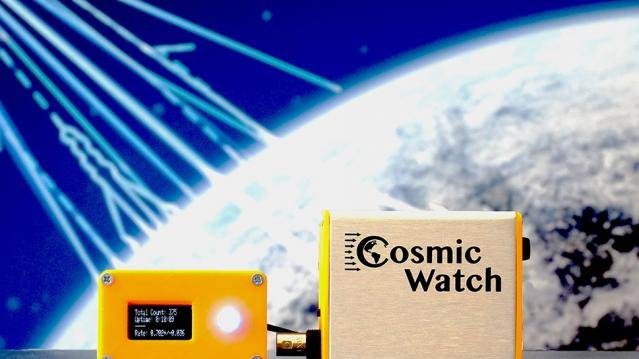
MIT's DIY muon detector sniffs out cosmic particles
Scientists at MIT have designed a pocket-sized muon detector that can be easily made with common electrical parts, meaning anyone can kit themselves out with legitimately-functional Ghostbusters-esque gear for less than $100. The device detects the charged particles -- muons -- that come from the high-energy cosmic rays blasted from supernovae beyond the solar system. These particles last only a fraction of a second but can be found in every layer of the planet's atmosphere, with some even penetrating the Earth's surface and burrowing into rock and ice.
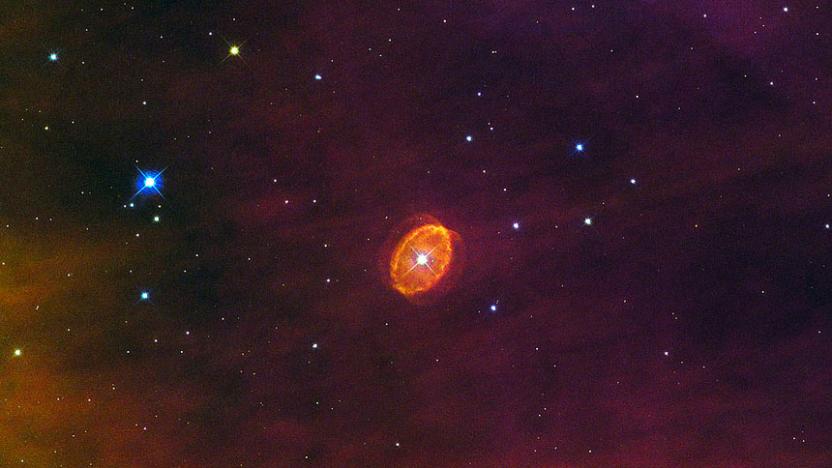
This star refuses to die, even after it explodes
Supernovae are some of the brightest and most energetic events in our galaxy. These occur when stars that have much greater mass than that of our sun explode; they become incredibly bright, and then slowly fade over the course of a few months as they lose energy. Under the terms of how we traditionally understand the life cycle of a star, a supernova inevitably means stellar death. Or does it? Astronomers working at Hawaii's Keck Observatory have found a star that refuses to die.

Stars can turn into black holes without a supernova
As a rule, astronomers believe that stars have to explode in a supernova before they collapse into black holes. That violent death is always the cue, right? Not necessarily. Researchers have spotted a massive star 22 million light years away, N6946-BH1, that appears to have skipped the supernova step entirely -- it brightened slightly and just disappeared. Checks have ruled out a dimmed star or dust. And this probably isn't a one-off incident, either. Ohio State University's Christopher Kochanek tells NASA that 10 to 30 percent of massive stars might die in failed supernovae.

Giant black hole could be to blame for brightest supernova ever
3.8 billion years ago, a star in the southern sky exploded and released 570 billion times more light than our sun and more than twice as much as any other recorded supernova. That star, dubbed ASASSN-15lh, is the brightest supernovae ever observed and, a year after witnessing its superluminescence in 2015, astronomers believe that they've figured out why it burned so brightly: It was being eaten by a supermassive black hole a billion times more massive than the sun.

Fossil evidence of supernovae found on the sea floor
Astrophysicist Shawn Bishop of the Technical University in Munich looked for evidence of supernovae in an unlikely place: on the sea floor. Now, according to a paper in Proceedings of the National Academy of Sciences, Bishop confirmed that there is a fossil record of a supernova event buried in the sediment at the bottom of the ocean.
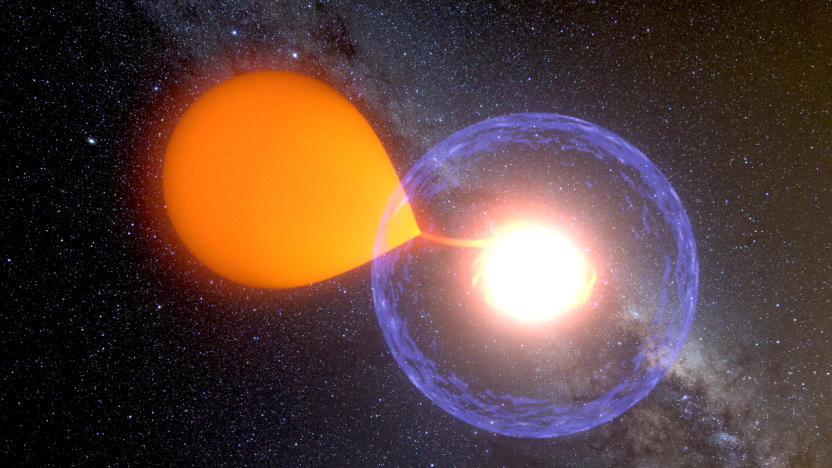
Astronomers witnessed a white dwarf going nova
When a star explodes, astronomers usually scramble to point their telescopes in its direction, hoping to catch a glimpse of the aftermath. While this is a fine way for learning about the results of a nova or supernova, much less is known about the events leading up to a star's death. But, according to a new study published in Nature, when the white dwarf in the binary star system V1213 Cen exploded in 2009, it gave astronomers the first opportunity to view a classical nova from start to finish.

A supernova once blasted the moon with radioactive iron
Stars are gigantic hydrogen bombs that normally produce helium with little fuss. When the hydrogen is all gone, however, they implode, causing exotic new elements to be formed by the massive gravitational pressure. If a star is just the right size (eight to 15 times our sun's mass), it will go supernova, ejecting heavy, often unique isotopes into space. Researchers have found some of those isotopes on the moon, meaning that our solar system was once hit by dust from a supernova just a few hundred light years away.
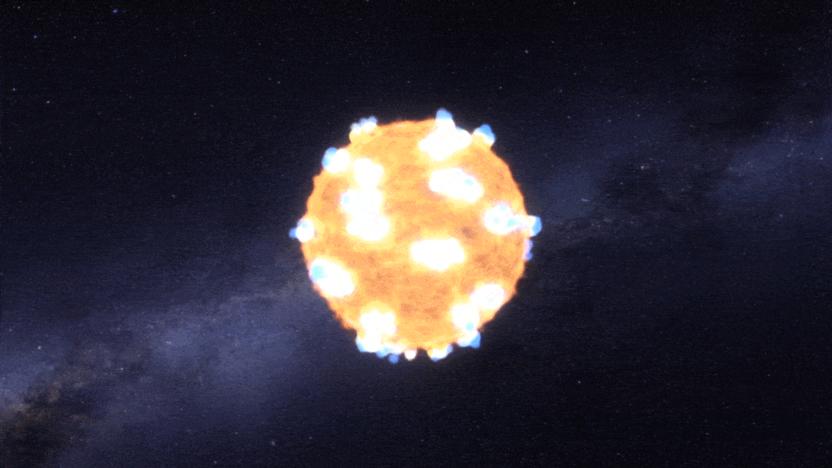
NASA catches the flash of a supernova for the first time
Spotting supernovae is relatively easy, but witnessing the immediate aftermath of those exploding stars? That's hard -- however, NASA has managed just that. By using the Kepler space telescope to capture the light of 500 galaxy every 30 minutes for 3 years, the agency caught the flash of a supernova's initial shockwave as a red supergiant (KSN 2011d) met its grisly end. That's no mean feat when this early burst only lasted roughly 20 minutes, and the target star was a whopping 1.2 billion light years away.

Supernovae suggest the universe is growing slower than expected
Don't look now, but what you know about the universe's growth might have been turned on its ear. University of Arizona scientists have learned that a certain type of supernova (Ia) isn't the reliable measuring stick for universe expansion that previous data would suggest. By comparing optical and ultraviolet images (such as in the hybrid image you see above), they found that older, farther exploding stars aren't behaving in the same way as newer ones closer to our own star. In other words, the ancient supernovae aren't necessarily as distant as you'd think -- and if they aren't, the universe isn't growing as quickly as textbooks say.








